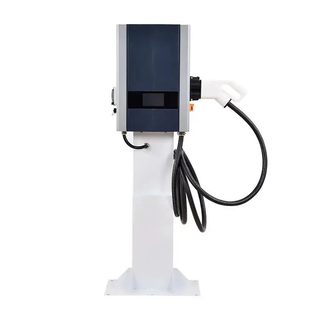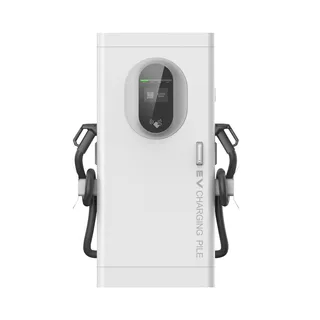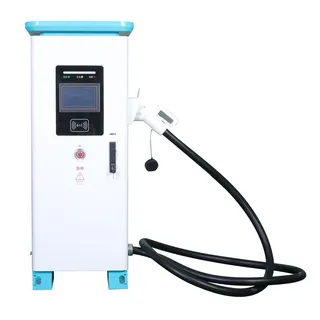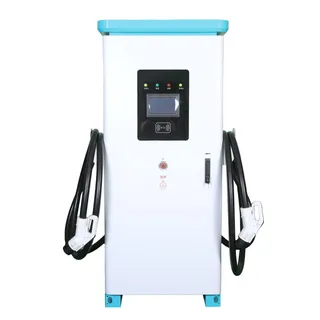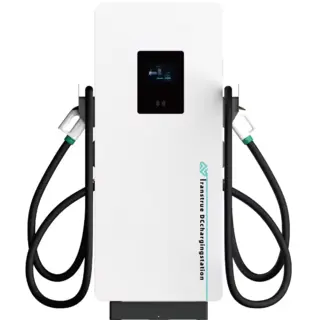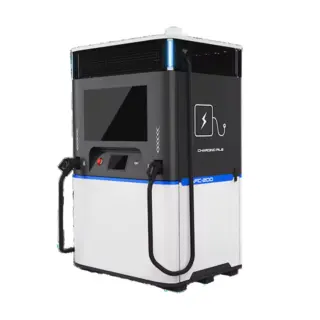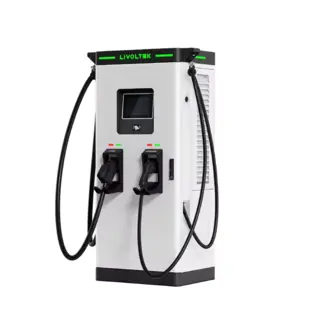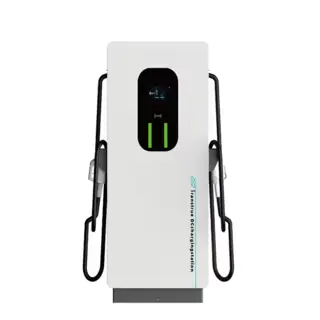Direct current (DC) charging is a state-of-the-art solution for rapidly charging fully electric vehicles (EVs). Unlike alternating current (AC) charging, which requires the vehicle’s onboard charger to convert AC to DC, DC charging delivers direct current straight to the vehicle’s battery, bypassing the need for that conversion process. This makes DC fast charging a much faster and more efficient method for charging EVs, particularly when time is limited.
While AC charging is common for home charging and typically used for overnight recharges, DC charging is predominantly found at public charging stations. It's designed to provide quick charging during short stops, making it a perfect solution for long-distance travel, road trips, or other scenarios where speed is crucial.
DC charging works by converting alternating current (AC) from the power grid into direct current (DC) at the charging station itself, rather than in the vehicle. The charger provides DC directly to the car’s battery, enabling much faster charging speeds compared to AC charging, where conversion happens inside the car.
Some DC charging stations can deliver an impressive 350 kW of power, allowing vehicles to gain substantial charge in as little as 30 minutes. The high power output significantly reduces charging time, making DC charging the ideal choice for quick recharges while on the go.
DC chargers typically use high-voltage systems and advanced infrastructure to provide the rapid transfer of power. As the system bypasses the onboard charger, the direct delivery of DC electricity allows for more efficient and faster charging, making it well-suited for public charging stations.
The most obvious benefit of DC charging is its speed. Unlike AC charging, which typically requires several hours to charge an EV, DC charging can provide a full or near-full charge in a fraction of the time. Some stations are capable of charging a vehicle from 0% to 80% in as little as 30 minutes, offering a significant advantage for EV owners in need of a quick charge while on the road. For longer trips or during times when speed is essential, DC fast charging is a game-changer.
Another key advantage is the expanding network of DC charging stations. As the popularity of electric vehicles increases, so does the number of DC fast charging stations. These stations are strategically placed along major highways and in urban centers to ensure EV drivers have convenient access to fast charging, making long-distance travel more feasible. This expansion is particularly important for fully electric vehicles, as it reduces range anxiety and provides more charging options.
One of the primary drawbacks of DC charging is its cost. While DC charging offers significantly faster charging times, it is often more expensive than AC charging. Charging your EV at a DC fast-charging station can cost more than using a home AC charger or public AC stations due to the infrastructure and energy demands required for high-speed charging. The price difference can be considerable, making it less economical for frequent use, especially for those who can charge their EV at home using AC charging overnight.
Although the network of DC charging stations is growing rapidly, they are still not as widely available as AC chargers, especially in less populated or rural areas. This means that for certain routes or regions, you might not have easy access to DC fast charging, which can be a limitation for long-distance travel.
The fundamental difference between AC and DC chargers lies in how they deliver power to the EV’s battery. AC chargers rely on the car’s onboard charger to convert the AC power from the grid into DC, which is then stored in the battery. This conversion process adds an extra step, making AC charging slower. AC chargers are typically smaller, cost-effective, and commonly found in residential areas or public charging stations.
In contrast, DC chargers are larger and more complex because the conversion process occurs within the charging station itself. This enables direct current to flow straight into the battery, resulting in much faster charging times. As such, DC charging is best suited for quick top-ups on the go, while AC charging is more appropriate for slower, overnight recharging.
While DC fast charging is incredibly efficient, it’s important to use it at the right times to maximize the benefits and prevent damage to the vehicle’s battery.
For the best results, it’s recommended to use DC fast charging when your EV’s state of charge (SOC) is between 20% and 80%. Charging within this range is optimal because the battery charges more quickly and efficiently in this sweet spot. Once the battery reaches 80%, charging speeds start to slow down due to the battery management system, and charging beyond 80% may cause unnecessary stress on the battery.
While it may seem necessary to fast-charge an EV when it’s running low on battery, charging from below 10% can accelerate battery degradation over time. It’s best to avoid frequent DC fast charging when your battery is near empty. Instead, try to charge your EV when the battery level is between 20% and 80% to prolong its lifespan and maintain its performance.
